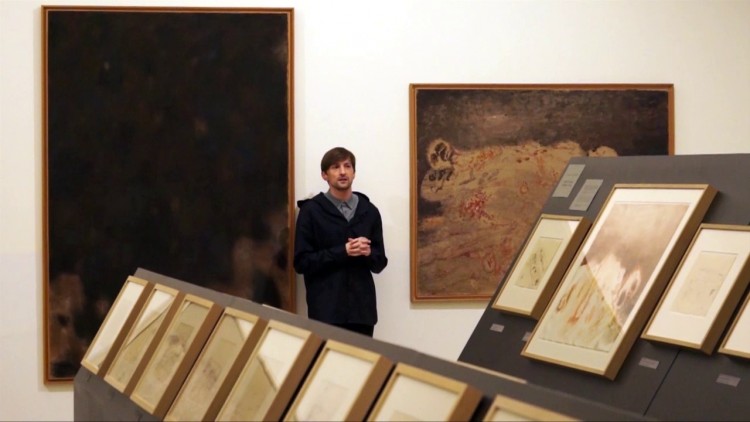Zoran Mušič was born on 12 February 1909 in Bukovica near Gorica (now Gorizia, Italy). As a child he shared the fate of many Slovenians from the Primorska region, who were forced to seek refuge in Štajerska and Koroška during the First World War. After finishing secondary school in Maribor, he enrolled in the Academy of Fine Arts in Zagreb, graduating in 1934 under Prof. Ljubo Babić. The following year he went on a study trip to Spain, a destination Babić recommended to all his students. Making copies after Goya in the Prado and frequent and extended painterly excursions to Dalmatia between 1934 and 1940 turned out to be crucial for all Mušič's development as an artist. In 1937 he became a member of the Neodvisni club of Slovenian artists and of Brazda, a club which brought together artists in Maribor.
In 1944 he went to live in Venice, becoming acquainted with Filippo de Pisis and his circle. In the autumn of 1944 he was arrested in Venice and taken via Trieste to the Dachau concentration camp. In the camp he did a series of drawings, poignant witnesses to the Nazi atrocities; later, in the early 1970s, these drawings spurred him to produce his most world-famous series of oil paintings and graphic prints, entitled We are not the Last. Liberated from the camp, Mušič moved to Venice in the summer of 1945; together with Paris, Venice became his home. In the French capital the artist worked and exhibited under the aegis of the renowned Galerie de France from 1953 on; he was also a member of the School of Paris group. Showing his work in numerous exhibitions all over the world, winning countless awards and the highest recognitions, Mušič became an acclaimed and celebrated artist, a master of modern art, already during his lifetime. He died on 25 May 2005 at his home in Venice.








